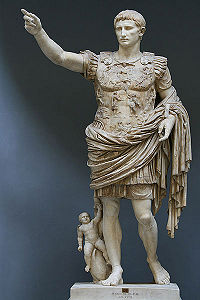The persecution of Judean Jews under Antiochus IV in the 160s BC forms the socio-historical context for the Book of Daniel. Antiochus desecrated the Temple in Jerusalem, and then later pillaged and burned the city itself. The Jewish community fought this oppression, resulting in the Maccabaean rising in which the Temple was successfully reclaimed.
Though not a Maccabaean manifesto, Norman Cohn argues that the Book of Daniel’s aim was to encourage the (elite) civilian population to remain faithful under persecution. The setting envisioned by the author of the Book of Daniel is likely Judea, while the four beasts he describes can be read as the imperial powers that ruled over the Jews. The one who appears from the clouds “like a son of man,” whether representative or symbol for the “saints of the Most High,” embodies the promise of future exaltation and vindication for the Jews.
This identification of the Jewish community with the “saints of the Most High” indicates that they will inherit the kingdom of God on earth. The establishment of this new and righteous kingdom is marked by the reconsecration of the Temple in Jerusalem. The Book of Daniel suggests that those Jews who rule over this new kingdom are not only those who are without sin but are those who also followed the teachings of visionaries like those of Daniel. The struggles that the Jewish community faced served as inner purification, elevating them above normal human beings and aligning them with the “holy ones” in Heaven.
The establishment of this holy kingdom is preceded by the judgment of the Seleucid Empire and of all Jews; those who were martyred under Antiochan persecution rather than deny their faith would be rewarded with eternal life. Written during the persecution of the Jews, the Book of Daniel is a narrative of resistance in that it promises retribution and reward for the injustices faced by the Jewish community under Antiochus IV.
Revelation draws heavily on the Book of Daniel, and can be understood as a Christian counterpart to the Book of Daniel. Revelation was written for Christians who still considered themselves Jews (their religion was not yet termed “Christianity”). In its relationship with the Book of Daniel, Revelation demonstrates that the history of the Church follows what has been foretold in scripture.
Early Christians were certain that Jesus would soon return to judge the living and the dead and thereby usher in the great transformation. The war in Heaven described in Revelation has an earthly parallel: the “woman clothed with the sun” represents Israel, with her child representing the Christian community. Satan is assisted on earth by two beasts: the first, representing the Roman Empire, and the second representing the “false prophet” or priesthood of the Roman religion. The Archangel Michael, the patron angel of Israel in the Book of Daniel, ultimately defeats Satan. Revelation was written during the reign of Domitian, and though scholars hotly debate the degree to which Domitian persecuted early Christians, it can be said with certainty that the author of Revelation had a conception of the cosmic order that contrasted markedly with the Hellenistic world in which he lived. Thusly, John, Revelation’s author, viewed the rule of kings and emperors as an expression of Satan’s power and expected God to put an end to both.

